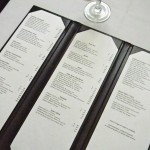ANOTHER SPANISH WINE PRODUCING AREA IN DISARRAY!
I’m a worried man. Should I be? Am I overreacting? Is that how you spell ‘overreacting’, double ‘r’? See, I’m a nervous wrreck!
I’ve just heard that there is serious discontent in one of my favourite wine producing areas, DO Valdeorras, in Galicia, NW Spain. White wines made with the area’s indigenous grape variety, Godello, for me, easily rival those made with Albariño in neighbouring DO Rías Baixas.
I’ve been same so for years and have been most gratified during the last couple to see that my far more illustrious wine writing colleagues and Masters of Wine have concurred.
However, according to Decanter Magazine, the Chairman of the Consejo Regulador, the Regulating Council, has just resigned in a dispute about the grape harvest. Señor Luis Garcia Pando has accused some producers, particularly the co-operatives, of deliberately promoting higher yields than the maximum allowed by the DO.
The inference being that the more grapes produced the more wine will be made, but of a lesser quality. The extrapolation of this concern is that the good (in my view, excellent!) reputation of DO Valdeorras would be damaged.
Needless to say the producers concerned have strenuously denied this and, supported by the agricultural unions, they have forced a vote of ‘no confidence’ which in turn forced Señor Garcia to resign.
There seems to have been a technical argument used to support their case, as Señor Garcia had threatened to take the offending producers to court, which they argue is beyond his terms of reference. However the basic point, re over production damaging quality does not seem to have been addressed.
There has thus been a schism created between member bodegas: those who support Señor Garcia argue that they are concerned about the quality of wines produced in DO Valdeorras; those opposed deny the accusations saying also, “ . . . no-one would doubt the quality of Valdeorras, even with more grape production.”.
Both sides have an agenda. It seems to me that those who support the now ex-Chairman, Señor Garcia, have a wholly visible goal – to maintain the quality of DO Valdeorras wines. Whereas the agenda of those who oppose them is loosely hidden.
Growers, presumably members of the agricultural unions, are paid per kilo of grapes. More grapes, more money. And their tag-team partners, the co-operatives, want as many grapes as they can find in order to make as much wine as possible to sell to, an as yet, unsuspecting public.
The first steps on the slippery slope to a quality downgrade have already been made. It would appear that the naysayers have been hiding their heads, not in sand, but in the slate-strewn soils of DO Valedorras, and therefore not paying attention to what’s been happening in: DO Navarra, DO Binissalem-Majorca; DO Rueda, DO Cava, DO La Mancha, and the latest, DOCa La Rioja?
In all the above DOs there have been problems, mostly different from those facing DO Valdeorras, but some similar. All have resulted in bodegas, often famous names, abandoning their respective DOs (with the exception so far of DOCa La Rioja which has recently convened a meeting designed to placate the unhappy bodega(s?) concerned, the result of which is not yet known).
And the result of this small, sometimes larger (e.g. DO Cava) exodus from the DOs above? Well collateral damage has been done to the DOs and their faithful members. The ‘no smoke without fire’ proverb holds sway and consumers have been influenced. It’s been something of a PR disaster and even regional Governments have become involved with a view to damage limitation.
And what of those bodegas that have deserted the sinking(?) ship? Well, there has often been a very pro-active publicity campaign, where bodegas have diplomatically side-stepped awkward questions from the press, whose answers could have poured scorn on the Consejos Regulador concerned. Most have publicly been at pains not to criticise the DOs, preferring to promote their new and different status – though who knows what has been said behind the closed doors of the Consejos Regulador offices!
And finally, what of we consumers? Am I right to be worried? What are the portents of these small cracks in the solid fabric of several of the official wine producing areas of Spain? Will others follow suit in further zones? How will it affect you, and me? Will Spain eventually become ‘New World’ and abandon all the red tape, rules and regulations that simply don’t exist in countries such as USA, Australia, New Zealand etc? Is this the first chimes of the death knell for the structure of the Spanish wine world?
Well, we can still buy wines and sparkling wines from those bodegas which have left their respective DOs. Indeed, it could be argued that such wines will be better than they were when made under the auspices of the DO as the bodegas concerned will have to make that much more effort in order to re-establish themselves.
(It’s also interesting to note that some of these deserting bodegas have banded together and drawn up a set of new rules and regulations giving birth to a new ‘DO style’ area of production, which might dispense with my point above about going more ‘New World’, and which perhaps, in the future, will eventually have its own similar problems to those from which the current DOs are suffering! Once institutionalised . . . !)
But what about the DOs from whence the deserters came? This is my worry. The bodegas which left, clearly had some problem with the DO, or the DO rules etc. These problems are not always clear and in fact may not affect us much?
However, in the case of DO Valdeorras, I am worried for sure. The growers’ spokesman’s apparent affirmation (he can’t mean it, surely?) that more grapes will not harm quality, just doesn’t stack up. Has this guy never heard of green pruning (where vines have some of their forming bunches pruned to ensure fewer, but richer, grapes per vine)? Is he not aware of the fact that grapes, used for certain wines, which are harvested from old, less productive vines is a selling point?
At this moment in time, I love the dry white wines made with Godello (and others) from DO Valdeorras, but I wonder how long my affair will last?




